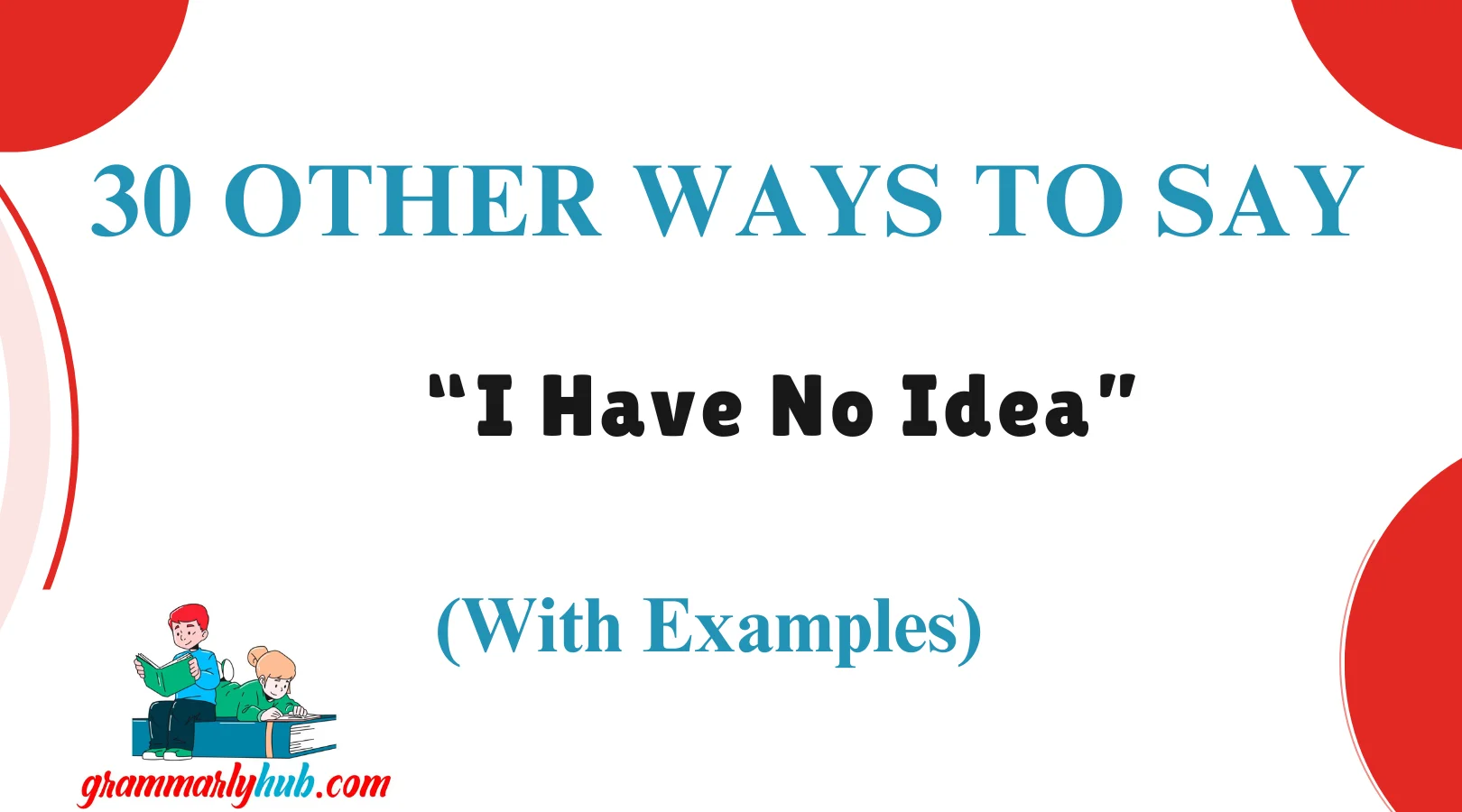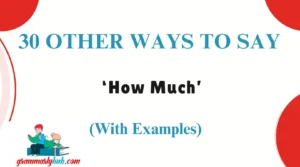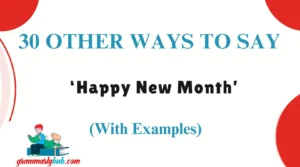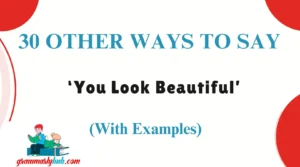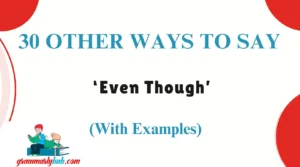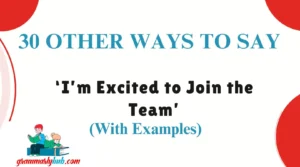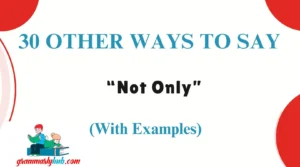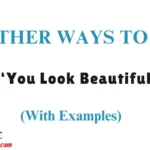When you’re unsure of something or simply don’t know the answer, saying “I have no idea” is a common go-to phrase. While it’s perfectly acceptable in casual conversation, there are times—whether in professional settings, academic discussions, or creative writing—where using other ways to say “I have no idea” can sound more thoughtful, polished, or appropriate to the tone.
From humorous expressions to formal alternatives, the English language offers a wide variety of ways to express uncertainty. Whether you’re responding to a tricky question, deflecting politely, or adding character to dialogue, expanding your vocabulary can make a big difference.
In this guide, we’ll explore alternative phrases for “I have no idea”, including formal, informal, clever, and empathetic options. You’ll find examples, tone guidance, and tips for when and how to use them—helping you sound more natural, nuanced, and confident even when you’re not quite sure what the answer is.
What Does “I Have No Idea” Mean?
The phrase “I have no idea” is commonly used to express uncertainty, lack of knowledge, or unfamiliarity with a subject, situation, or fact. It’s a straightforward way to admit you don’t know something. While it’s honest, it can sometimes come across as abrupt or disengaged—especially if not paired with the right tone or body language.
When to Use “I Have No Idea”
Use this phrase when you want to be transparent about not knowing something, but be mindful of your tone. In casual conversations, it’s totally fine. In professional settings or sensitive topics, you might want to use a softer or more constructive version to show you’re still invested in finding a solution or continuing the discussion.
Is It Professional/Polite to Say “I Have No Idea”?
It depends on the context and tone. While it’s not rude, it can sound too casual or indifferent in professional settings. Replacing it with more thoughtful alternatives like “That’s a great question—let me find out for you” makes your response sound more collaborative and respectful.
Pros and Cons
✅ Pros:
- Honest and direct
- Saves time
- Easy to understand
❌ Cons:
- Can sound dismissive
- Lacks engagement or initiative
- Not always professional
Synonyms For “I Have No Idea”
- Let me get back to you on that
- That’s a great question
- I’m not entirely sure
- I’ll need to double-check
- I’m not certain, but I can find out
- That’s outside my area of expertise
- I’d rather not guess
- I haven’t looked into that yet
- I’m still learning about that
- I’m not 100% sure at the moment
- That’s not something I’ve come across before
- I wish I knew
- I don’t have the answer just yet
- I’ll look into it
- That’s beyond what I know right now
- I’ll need to do some research
- I’m not familiar with that
- I’m drawing a blank
- I need to check my notes
- I don’t have the information on hand
- I’m unsure, but I’ll find out
- I’m not updated on that yet
- That’s new to me
- I’ll circle back once I know
- I’d love to find out more
- I’m curious now too
- I can’t say for certain
- I’ll need more time to understand that
- I don’t have the full picture
- Let’s find out together
1. Let Me Get Back to You on That
Definition: A polite and professional way of saying you don’t have the answer now but will follow up later.
Detailed Explanation: This phrase is especially effective in work settings. It shows accountability and a willingness to help, which softens the impact of not knowing.
Scenario Example:
“That’s a good point. Let me get back to you on that after I check with the team.”
Worst Use: In very informal chats—it may sound too formal or procedural.
Tone: Professional, responsible, reassuring.
2. That’s a Great Question
Definition: A thoughtful response that acknowledges the question before admitting uncertainty.
Detailed Explanation: Using this phrase frames your lack of knowledge in a positive way. It shows appreciation for curiosity and gives you space to respond with openness.
Scenario Example:
“That’s a great question. I’ll need to look into it a bit more to give you a complete answer.”
Worst Use: If overused—it can sound like a stall tactic.
Tone: Appreciative, reflective, collaborative.
3. I’m Not Entirely Sure
Definition: A softer version of saying you’re uncertain, without shutting down the conversation.
Detailed Explanation: This version adds humility while leaving room for some knowledge, suggesting you might know part of the answer but not the full picture.
Scenario Example:
“I’m not entirely sure how the new policy affects remote workers. Let’s find out.”
Worst Use: If used when you clearly have no knowledge—it may seem evasive.
Tone: Gentle, humble, open.
4. I’ll Need to Double-Check
Definition: A proactive phrase that implies you’re responsible and want to confirm accuracy.
Detailed Explanation: This makes you sound thorough rather than uninformed. Great for maintaining trust while still admitting you’re unsure.
Scenario Example:
“I think that’s how it works, but I’ll need to double-check the documentation.”
Worst Use: When there’s nothing to actually verify—it can sound like an excuse.
Tone: Diligent, professional, cautious.
5. I’m Not Certain, but I Can Find Out
Definition: An honest expression of doubt followed by a promise to seek the answer.
Detailed Explanation: It’s respectful, especially when you want to keep communication open and actionable.
Scenario Example:
“I’m not certain how long that will take, but I can find out and let you know.”
Worst Use: If you don’t follow through—it will hurt credibility.
Tone: Helpful, honest, dependable.
6. That’s Outside My Area of Expertise
Definition: A respectful way to say you’re not the right person to ask, without dismissing the question.
Detailed Explanation: This is ideal for cross-functional teams or collaborative settings. It lets others know you’re not avoiding the question—you’re just not the expert.
Scenario Example:
“That’s outside my area of expertise, but I can connect you with someone who knows more.”
Worst Use: When it becomes a pattern of avoiding responsibility.
Tone: Respectful, clear, collaborative.
7. I’d Rather Not Guess
Definition: A careful way to explain that you don’t want to give inaccurate information.
Detailed Explanation: This protects your integrity and shows you value accuracy over speed.
Scenario Example:
“I’d rather not guess. Let me confirm the numbers first.”
Worst Use: If you say it with a cold tone—it may come off as disengaged.
Tone: Cautious, respectful, responsible.
8. I Haven’t Looked Into That Yet
Definition: A direct and honest statement that shows your awareness and willingness to learn.
Detailed Explanation: This phrase makes it clear you’re not ignoring the topic—you just haven’t had the chance to explore it yet.
Scenario Example:
“I haven’t looked into that yet, but it’s on my radar.”
Worst Use: If used repeatedly without follow-up—it could sound like procrastination.
Tone: Transparent, forward-looking, informal.
9. I’m Still Learning About That
Definition: A humble and human way to express that you’re in the process of building your knowledge.
Detailed Explanation: This can be great in professional development, training, or peer-to-peer discussions—it signals growth.
Scenario Example:
“I’m still learning about that framework, but I’d love to hear what you think.”
Worst Use: In high-stakes moments when confidence is expected.
Tone: Humble, honest, growth-minded.
10. I’m Not 100% Sure at the Moment
Definition: An honest admission of partial uncertainty that leaves room for clarification later.
Detailed Explanation: This shows you’re close to knowing, and you might just need a moment or quick reference.
Scenario Example:
“I’m not 100% sure at the moment, but I’ll check with the client brief and confirm.”
Worst Use: If the person expects a definitive answer now.
Tone: Flexible, transparent, thoughtful.
11. That’s Not Something I’ve Come Across Before
Definition: An honest way to admit unfamiliarity while sounding open to learning.
Detailed Explanation: Shows you haven’t encountered the topic but doesn’t close the door on further exploration.
Example:
“That’s not something I’ve come across before. I’ll check and get back to you.”
Worst Use: If said dismissively, it can seem uninterested.
Tone: Open, curious, honest.
12. I Wish I Knew
Definition: A casual, empathetic phrase that expresses genuine regret about not knowing.
Detailed Explanation: Good for informal conversations, it conveys honesty and relatability.
Example:
“I wish I knew the answer to that—sounds tricky!”
Worst Use: In formal settings, it may sound too casual.
Tone: Friendly, empathetic, informal.
13. I Don’t Have the Answer Just Yet
Definition: A hopeful way to admit not knowing while implying you will find out.
Detailed Explanation: Keeps the conversation positive and forward-moving.
Example:
“I don’t have the answer just yet, but I’m on it.”
Worst Use: If you never follow up, it loses credibility.
Tone: Optimistic, responsible, proactive.
14. I’ll Look Into It
Definition: A proactive phrase signaling your intent to find the answer.
Detailed Explanation: Shows initiative and willingness to help.
Example:
“I’m not sure now, but I’ll look into it and update you soon.”
Worst Use: If overused without action, it sounds empty.
Tone: Helpful, engaged, responsible.
15. That’s Beyond What I Know Right Now
Definition: An honest admission of limits to your current knowledge.
Detailed Explanation: Polite and professional; it sets clear expectations.
Example:
“That’s beyond what I know right now. Let me gather more info.”
Worst Use: If you use it to avoid responsibility, it feels like evasion.
Tone: Clear, respectful, honest.
16. I’ll Need to Do Some Research
Definition: Expresses willingness to invest time in finding the answer.
Detailed Explanation: Shows dedication and thoroughness.
Example:
“I’m not sure, but I’ll need to do some research before I answer.”
Worst Use: If used as a deflection tactic.
Tone: Committed, thoughtful, professional.
17. I’m Not Familiar with That
Definition: A straightforward way to admit you don’t know about a topic.
Detailed Explanation: Clear and honest, useful for unfamiliar subjects.
Example:
“I’m not familiar with that software, but I can learn more.”
Worst Use: If said abruptly, it might seem blunt.
Tone: Direct, honest, neutral.
18. I’m Drawing a Blank
Definition: A casual way to admit momentary forgetfulness or uncertainty.
Detailed Explanation: Used mostly in informal settings to show you can’t recall something now.
Example:
“Sorry, I’m drawing a blank on that detail. Let me check.”
Worst Use: In formal contexts, it may sound too casual or evasive.
Tone: Casual, honest, lighthearted.
19. I Need to Check My Notes
Definition: A practical phrase indicating you might know but need to verify.
Detailed Explanation: Shows thoroughness and precision.
Example:
“I think I have that info; I just need to check my notes.”
Worst Use: If you don’t actually check, it damages trust.
Tone: Careful, professional, responsible.
20. I Don’t Have the Information on Hand
Definition: A professional way to say you don’t have immediate access to the info.
Detailed Explanation: Keeps communication clear and honest.
Example:
“I don’t have the information on hand right now. Let me find it and get back to you.”
Worst Use: If used repeatedly without follow-up.
Tone: Polite, clear, responsible.
21. I’m Unsure, but I’ll Find Out
Definition: A balanced phrase showing honesty and a willingness to help.
Detailed Explanation: Good for keeping the conversation moving positively.
Example:
“I’m unsure, but I’ll find out and keep you posted.”
Worst Use: If no follow-up happens, it loses trust.
Tone: Helpful, positive, reliable.
22. I’m Not Updated on That Yet
Definition: Indicates that you may have known before but haven’t caught up on recent changes.
Detailed Explanation: Good for fast-moving fields or news.
Example:
“I’m not updated on that yet. Let me check the latest info.”
Worst Use: If it becomes a constant excuse.
Tone: Honest, humble, transparent.
23. That’s New to Me
Definition: A casual way to say you haven’t encountered this before.
Detailed Explanation: Shows openness to learning.
Example:
“That’s new to me—I’ll dig into it and let you know.”
Worst Use: If used dismissively.
Tone: Curious, casual, open.
24. I’ll Circle Back Once I Know
Definition: A clear promise to follow up with the answer later.
Detailed Explanation: Professional and respectful of others’ time.
Example:
“I don’t have the info now, but I’ll circle back once I know.”
Worst Use: If you fail to circle back.
Tone: Responsible, professional, polite.
25. I’d Love to Find Out More
Definition: Shows eagerness and a positive attitude toward learning.
Detailed Explanation: Great for collaborative or informal contexts.
Example:
“I’d love to find out more about that topic with you.”
Worst Use: If it feels insincere or used to avoid answering.
Tone: Engaged, friendly, open.
26. I’m Curious Now Too
Definition: An inclusive way to admit you don’t know and invite joint discovery.
Detailed Explanation: Builds connection and shared interest.
Example:
“I’m curious now too—let’s find the answer together.”
Worst Use: If overused in professional contexts.
Tone: Friendly, collaborative, curious.
27. I Can’t Say for Certain
Definition: A careful, honest admission of uncertainty.
Detailed Explanation: Good for when you have partial info but need confirmation.
Example:
“I can’t say for certain if that’s accurate. I’ll verify and let you know.”
Worst Use: If used to avoid commitment.
Tone: Thoughtful, cautious, honest.
28. I’ll Need More Time to Understand That
Definition: An honest request for additional time to grasp the topic.
Detailed Explanation: Shows seriousness and willingness to learn.
Example:
“I’ll need more time to understand that fully. Can I get back to you?”
Worst Use: If delays become excessive.
Tone: Respectful, responsible, sincere.
29. I Don’t Have the Full Picture
Definition: Admits incomplete knowledge while signaling intent to gather more info.
Detailed Explanation: Useful when you know some parts but lack the complete context.
Example:
“I don’t have the full picture yet, but I’m working on it.”
Worst Use: If it’s used as a vague excuse.
Tone: Honest, thoughtful, open.
30. Let’s Find Out Together
Definition: An inclusive phrase that invites collaboration in discovering the answer.
Detailed Explanation: Builds rapport and shared problem-solving.
Example:
“I don’t have that info now—let’s find out together.”
Worst Use: In situations needing quick, expert answers.
Tone: Collaborative, friendly, supportive.
Conclusion
Expressing “I have no idea” doesn’t have to sound blunt or negative. With the right alternatives, you can communicate your uncertainty with warmth, professionalism, and openness. Whether you’re chatting casually or navigating a formal setting, these 30 phrases give you the tools to respond honestly while maintaining connection and respect.
Using alternatives like “Let me get back to you on that” or “I’ll need to do some research” signals responsibility and a willingness to help, which can strengthen relationships and build trust. Meanwhile, friendly options like “I’m curious now too” or “Let’s find out together” invite collaboration and curiosity.
Ultimately, choosing the right phrase depends on your audience, context, and tone. When you express uncertainty thoughtfully, you keep conversations open, positive, and productive.
FAQs
Q1: Is it okay to say “I have no idea” in professional settings?
A1: While honest, “I have no idea” can sound too direct or casual. It’s usually better to use softer alternatives like “I’m not entirely sure” or “Let me find out for you” to maintain professionalism.
Q2: How can I sound more helpful when I don’t know the answer?
A2: Use phrases that show willingness to learn or assist, such as “I’ll look into it” or “Let me get back to you on that.” This shows engagement and responsibility.
Q3: What should I avoid when admitting I don’t know something?
A3: Avoid sounding dismissive or evasive. Phrases that shut down conversation or show disinterest can harm relationships. Instead, aim for openness and willingness to find the answer.
Q4: Are casual phrases like “I’m drawing a blank” appropriate in all contexts?
A4: No, casual phrases are best reserved for informal settings. In formal or professional environments, opt for more polished alternatives.
Q5: Can admitting I don’t know actually build trust?
A5: Yes! Being honest about your limits while showing a plan to find answers demonstrates integrity and builds credibility.

Welcome to GrammarlyHub, your go-to destination for mastering grammar, improving your writing, and finding the best language tools available online. Founded by Emma Rose, a passionate writer and advocate for clear communication, GrammarlyHub was built to help people express themselves with confidence and accuracy.
